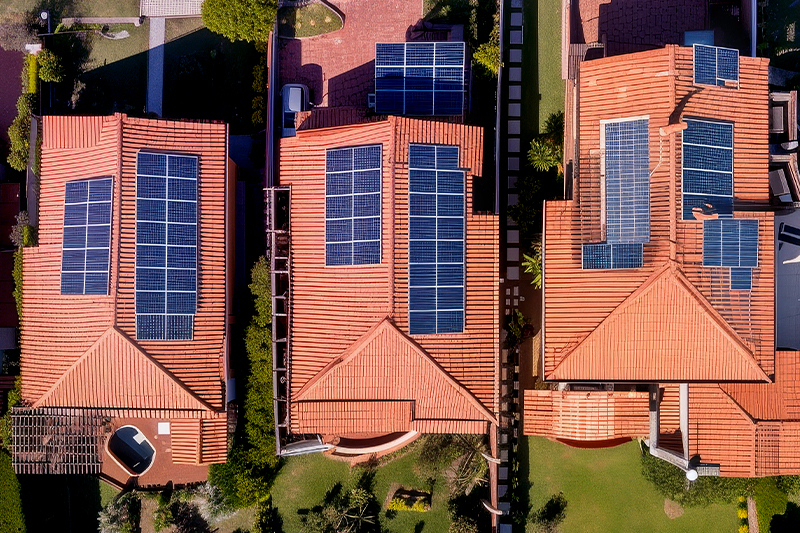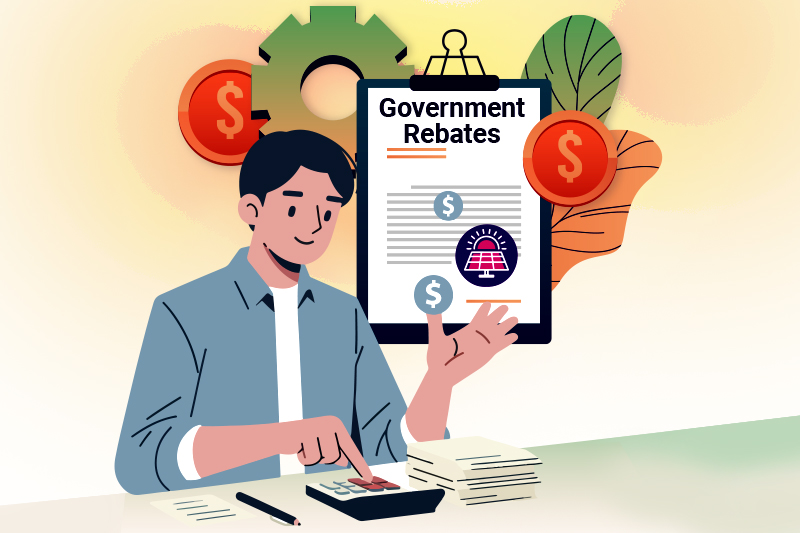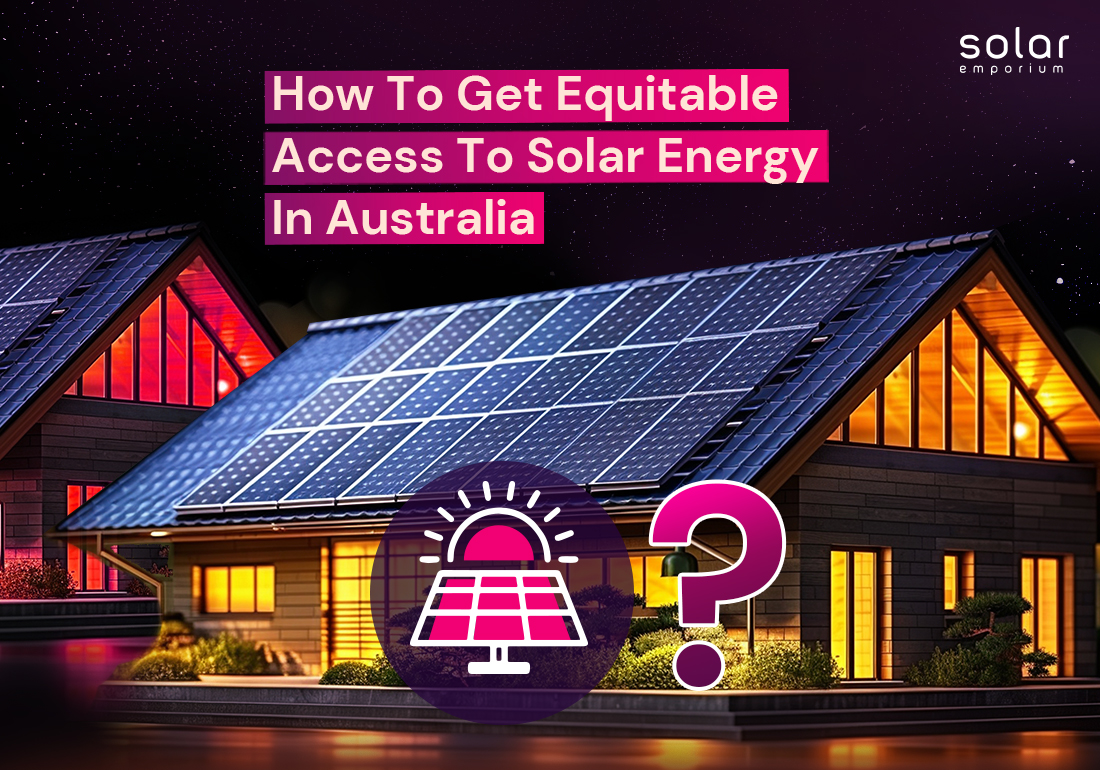Solar energy can help people spend less on living expenses, but not everyone can use it because they need more governmental and financial support. It will provide equitable access to all Australians.
So, how do we get equitable access to solar energy in Australia? We’ll find out today!
As the cost of living goes up, many families in Australia are using solar panels on their roofs to save money on electricity. A recent survey found that around 29% of Australians either have or are considering getting solar panels for their homes.
However, this survey also found that one of every five Australians can only afford to keep their homes warm and cool enough.
Some can’t install solar panels or better insulation because they can’t pay for it upfront or live in places they don’t own and can’t make those changes.
Many people who earn less than A$50,000 a year struggle financially, and younger adults between 18 and 34 don’t plan to get energy-saving improvements because they can’t afford them.
Renewable energy isn’t just crucial for saving money on electricity—it also helps fight climate change and supports sustainable living. However, not everyone in Australia has the same access to solar power.
And to explore this more, let’s first understand equity and solar equity.
What is Equity?
Equity means fairness or justice. In financial terms, it refers to the value of something you own after subtracting any debts you owe on it.
For example, if you own a house worth $200,000 but still owe $150,000 on your mortgage, your equity in the house is $50,000 ($200,000-$150,000).
Equity can also mean fairness in how resources or opportunities are distributed among people.
For instance, having equity in society means everyone has a fair chance to succeed regardless of their background or circumstances. This could involve providing extra support to those who need it to level the playing field.
In summary, equity can mean the value of ownership in financial terms or fairness and justice in how resources and opportunities are shared among people.
Solar Equity
Solar equity refers to ensuring fair access to solar energy resources and benefits for everyone, especially those facing barriers to using solar power.
This means ensuring that people from all backgrounds and income levels can benefit from solar energy technologies, such as solar panels, in their homes.
Solar equity is significant because solar power can help save money on electricity bills and reduce reliance on fossil fuels, which is good for the environment.
However, not everyone can afford or access solar energy, so solar equity ensures everyone has a fair chance to benefit from this renewable energy source.
This could involve policies and programs to help lower-income households, renters, or communities of color access and benefit from solar energy technologies.
What does Equity in Solar Uptake Look Like?

It’s essential to understand the difference between equality and equity. Equality means giving every household the same resources or opportunities. For example, every household would get the same subsidy to install solar panels.
Equity is about fairness. It recognizes that not all households start from the same place and that some may need extra help to balance things out.
In the context of solar energy, equity would mean that every Australian can benefit from solar power. Any subsidies or support would be adjusted based on individual needs.
What Policies Can Improve Solar Equity?
Policies that could make rooftop solar more fair include:
- Direct money is given to help low-income families who can’t usually afford solar power.
- Offering different financial benefits like solar rebates.
- Setting up community solar programs where households can share the benefits.
Some programs help low-income homeowners install solar panels. For example, New South Wales has a program called “Solar for Low-Income Households.”
People who qualify can get a free 3-kilowatt solar system by giving up the Low-Income Household Rebate for ten years. South Australia also had a program called “Switch for Solar,” but applications ended in August 2022.
However, to use these programs, Australians first need to own a home, which can be challenging.
Also, focusing only on income can be a problem. Giving subsidies only to low-income families might leave out families with low savings who earn more money than the income limit.
The Australian government has promised new ways to implement fairer policies. Their Powering Australia Plan set aside $102.2 million for community solar banks, projects owned by the community that help those who can’t access solar power right now.
Families can rent or buy a spot in these solar banks instead of putting panels on their roofs. However, for these projects to work, they need to be easy to use and affordable for everyone.
We need more information to make better policies for fair energy. This could include a new survey about household energy, more research to understand fairness better, and collaboration between researchers and policymakers to test new ideas.
You can get back some of the money you spend on setting up and maintaining your rooftop solar and battery system in two ways. T
he first way is through government rebates, which can help with the initial cost of buying and installing your system, depending on where you live and what programs are available. Once your system is installed, the second way is to sell some of the electricity you produce back into the power grid, called a feed-in tariff.
Giving Equitable Access to Solar Energy in Australia for All

Government Rebates
Federal and state government rebates for rooftop solar and battery storage can significantly lower the cost of buying and installing a solar system.
We have compiled a list of the primary schemes operating in Australia, but more rebates might be available to you. You can look for federal and state government rebates on the Federal Government’s energy rebates webpage.
When you get a solar or battery storage system quote, the retailer usually includes any rebate amount you are eligible for.
National
The Small-scale Renewable Energy Scheme (SRES) provides a financial boost for individuals and businesses installing small-scale renewable energy systems, such as rooftop solar.
This is done through small-scale technology certificates (STCs), given upfront based on a system’s expected power generation (depending on installation date and location) until the scheme ends in 2030.
The value of STCs changes with market conditions. The total subsidy you receive depends on factors such as the size and location of the solar system and the STC price when the system was installed.
More detailed information about STCs is in our Guide to Installing Solar for Households and from the Clean Energy Regulator.
The Federal Government also manages the Large-scale Renewable Energy Target (LRET) and supports large-scale renewable energy projects like power stations.
Solar Schemes in Different Territory
Australian Capital Territory (ACT)
The ACT Government subsidizes 5000 battery storage systems for ACT homes and businesses.
South Australia
The South Australian Government offers a subsidy for battery storage costs and low-interest finance.
Victoria
The Victorian Government has subsidized solar and battery storage installation since July 1, 2019.
Feed-in Tariffs
A feed-in tariff is the rate you are paid for any electricity your rooftop solar system sends back into the grid.
Feed-in tariffs are mainly available for residential solar systems and might not apply to commercial customers. However, most commercial customers can negotiate a rate with their electricity provider.
Most feed-in tariffs today are ‘net’ feed-in tariffs. This means the electricity your solar panels produce is used in your home first, and you get paid for any extra electricity exported to the grid.
Feed-in tariffs vary by state and retailer. Some states have a government-set minimum rate, while others require you to negotiate with your electricity provider.
There is no government-set minimum payment for retailers in New South Wales or southeast Queensland. It’s a good idea to shop around and find out which electricity providers offer the best rates for solar customers.
Solar Financing

Different financial support is also available to give everyone equitable access to solar in Australia.
●Solar Leasing/Renting
Solar leasing means the leasing company owns the system until the full payment is made over the lease term. It cannot be easily transferred to another property during the leasing period.
●Green Loans
Green loans are personal loans provided by financial institutions that prioritize environmental and community support. They offer low interest rates and are ideal for financing solar panels, energy-saving windows, and air conditioning.
●Personal Loans
A finance company can help people who cannot borrow more on their home mortgage or prefer a higher interest rate incentive to pay off the loan faster. Even with higher interest rates, a personal loan may be less expensive.
●Power Purchase Agreements (PPAs)
PPAs enable solar customers to install a solar panel system without incurring upfront costs by paying the solar company for the generated electricity.







